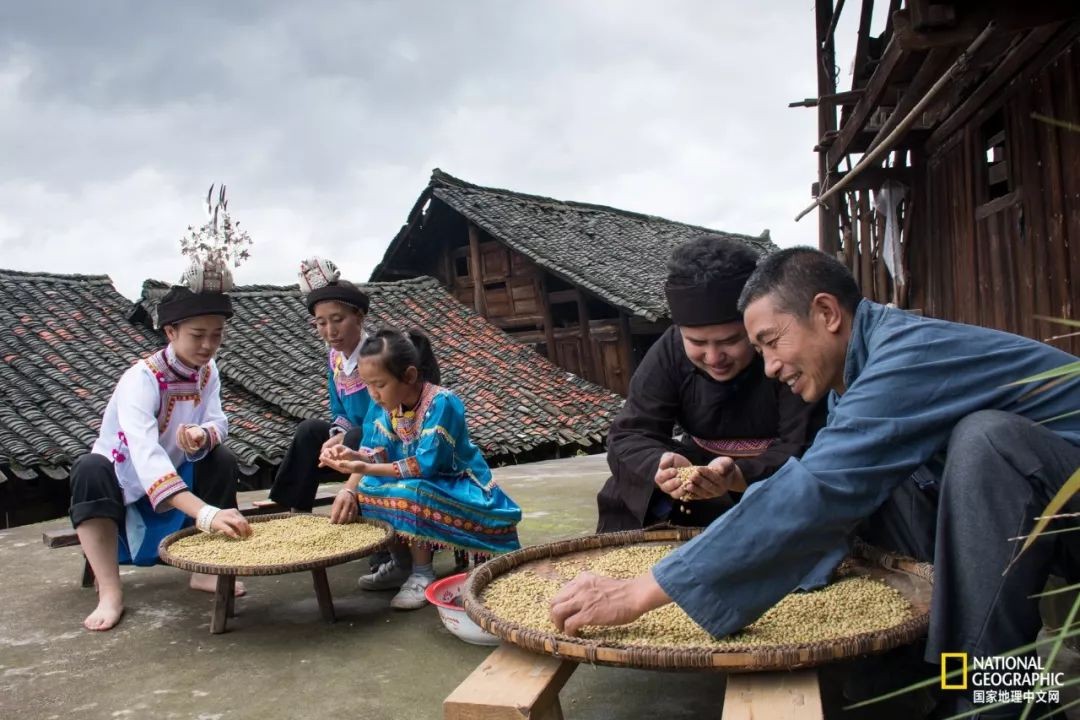
Aduo Jiangni, silver craftswoman of Qiannan, Guizhou Province
If silver is synonymous with simplicity, Thai silver with vintage style, and Tibetan silver with profound meaning, then our Miao silver must be the most beautiful of all. The forging technique of Miao ethnic silver jewelry has been listed as one of the first batch of national intangible cultural heritage. This traditional craft is entirely handmade and involves a complex process. Aduo Jiangni, a young and beautiful Miao silver craftswoman from Qiannan (the Southern region), Guizhou Province. Behind her seemingly delicate appearance lies a pair of skillful hands that carry the ancient Miao craftsmanship and the spirit of the ethnic group - focus, humility, and enterprise.
Written and photographed by Xu Jianfeng (Hanmian)
I successfully arranged an interview and filming opportunity - she is a handmade silver craftswoman from Qiannan, Guizhou, and also an Alei (meaning "pretty girl" in the Miao language).

After exchanging pleasantries during our first meeting, I learned that this Alei girl from Guizhou is actually named Aduo Jiangni and is the daughter of a clan leader from the Black-costumed Miao branch. Like most Miao village girls, Aduo left the village for education. Later, after knowing that she is of Miao ethnicity, her colleagues would ask her to get them some Miao silver jewelry.

The earrings Aduo wears took three days to make.
They are a pair of earrings with a fish basket design,
which symbolizes a bountiful harvest.
However, "Miao silver" is simply a commercial label derived from businesspeople in Jiangsu and Zhejiang. It refers to a type of white bronze alloy. For the true Miao people, silver jewelry holds special significance. Aduo has never been apart from silver jewelry since birth, and one of her maternal uncles is a skilled silver craftsman. Therefore, silver jewelry holds an extraordinary meaning for Aduo.

A potting tool is placed inside the pot for sculpting and shaping.
It is also known as a hammer pad.
After careful consideration and gaining the support of her family, Aduo decided to promote Miao silver jewelry culture on her own. After gaining insights into the market in coastal cities and testing the market, Aduo decided to avoid the hustle and bustle and relocate to Chengdu, a city with a rich humanistic atmosphere, where she established her own studio.

Aduo uses the most dedicated craftsmanship and the best materials to create soulful works;
the picture shows two blocks of pure silver as the raw material for making jewelry.
The forging technique of true Miao silver jewelry requires the use of pure silver as raw material. The style and structure of the silver jewelry are carefully designed by craftspeople. The basic process of silver jewelry making involves at least thirty steps, including casting, annealing, forging, welding, braiding, inlaying, polishing, and more. The craftsmanship demands a high level of skill, typically requiring over 30 years of experience for a craftsperson to become proficient.

A Miao silver bangle specially made for a tea master's child.
With the impact of mechanization and the Miao silver craftspeople's tradition of "keeping the skills within the family," the continuity and dissemination of Miao silver jewelry culture have faced constant challenges. As a result, Aduo's chisel knife carries even more responsibility. Moreover, due to the intricate forging process, the number of people who truly possess this skill has been dwindling.
On May 20, 2006, the forging technique of Miao silver jewelry was approved by the State Council and listed as one of the first batch of national intangible cultural heritage. Aduo secretly made up her mind: never let this intangible cultural heritage fade away.
According to Aduo, every family in their clan has different roles, and her family has been engaged in silver crafting for generations. In order to inherit the forging technique (intangible cultural heritage), Aduo resolutely became a craftswoman.

A bracelet made after two full days' work.
Miao silver jewelry embodies a rich cultural connotation. From the variety of designs, pattern creations, to the assembly process, it showcases a high cultural taste. The meticulously carved lines and totems under the craftspeople's hands represent the image of Miao culture. What Aduo inherits is not only Miao craftsmanship but also the spirit behind it - focus, humility, and enterprise.
The birth of a piece of silver jewelry requires countless efforts and only through perseverance can it be presented perfectly. As the market is increasingly occupied by machinery that simplifies the process, many silver craftspeople have gradually put down their chisel knives.

A thin-walled dragon birth pot that took half a month to make.
Only a few true craftspeople continue to persist amidst hardships. In Aduo's eyes, true Miao silver craftspeople should have their own chisel knife. It is not only a legacy but also a continuation.

Aduo's sister designing the patterns of a silver ring.
Aduo and her companions persist in inheriting traditional Chinese craftsmanship, infusing vitality into every object. Using silver jewelry as a carrier, they express their contemplation of beauty, love, and life. They believe that the natural luster and texture of silver can represent an elegant quality. Their works do not involve electroplating other metals and truly showcase the appearance and rustic nature of silver.

When Aduo is back at home, her father often tells her,
"Be responsible for the path you've chosen and do things well."
People only live for a hundred years, but objects can be passed down for thousands of years. Aduo often says that in the process of making silver jewelry, each piece must be infused with full spiritual commitment in order to create truly soulful works.

The basic tools required for the forging technique of Miao silver jewelry.
Today, Aduo demonstrated her craftsmanship by creating a purely handmade silver jewelry piece –
an auspicious drum (Jixiang Gu) pendant.

Silver wires are polished and filed to create pointed tips for the next step of wire drawing.
The first step in making a pendant is to cut the material from a silver block. The first process is called wire drawing, which involves cutting the silver block into silver bars and further processing them into silver wires, also known as fine silversmithing.

The next step is the filing and polishing process.

Wire drawing is an essential process in silver jewelry making.
In this process, craftspeople use skill and force to pull the silver bars through 52 drawing holes, one by one, to create fine wires thinner than a hair, with a diameter of only 0.26 millimeters. This process may sound simple, but it requires steady hands and attention to detail from the craftspeople because a mistake at any point can break the silver wire, rendering all previous efforts in vain.

After each wire drawing, the silver wires need to be measured promptly.
After a morning of wire drawing, the next process is wire shaping. Without using molds, Aduo completes this process using only a pair of pliers.

To ensure the activity of silver ions, the silver wires are heated and softened.

The weaving process in material preparation
The next step is wire weaving, where gold, silver, copper, and other materials are drawn into fine wires and then woven using techniques such as stacking and weaving. Once the wire drawing process is completed, silver wires are extracted to create silver rings. The previous materials are combined through processes such as filling, assembling, and soldering.

The wire is heated for softening during the weaving process.

Weaving

The silver wires are fixed into the outer frame of
Auspicious Drum pendant (Jixiang Gu) by welding.

The previously prepared small silver rings are used to fill in the gaps.

After the ancient welding method without spots, the piece is heated.

Polishing
After about four hours of work, a handmade auspicious drum pendant in silver is almost complete, with only the polishing step remaining. From cutting the silver block to drawing the silver wire, it finally becomes a complete piece through techniques such as stacking, weaving, cutting, filling, assembling, and soldering. The seamless welding technique is the most miraculous among the eight major techniques.

A finished traditional Miao silver pendant (auspicious drum)
that takes a whole day to make.

Silver wires of different sizes in a finished piece.
In addition to inheriting the traditional handmade silver jewelry techniques of Miao villages for centuries, Aduo doesn't stick to the old ways but incorporates many modern elements into the crafted silver jewelry. When asked about the spirit of craftsmanship, Aduo calmly says,
"I just want to do this well with my fellow craftspeople."
Translated from National Geographic (Chinese version)
